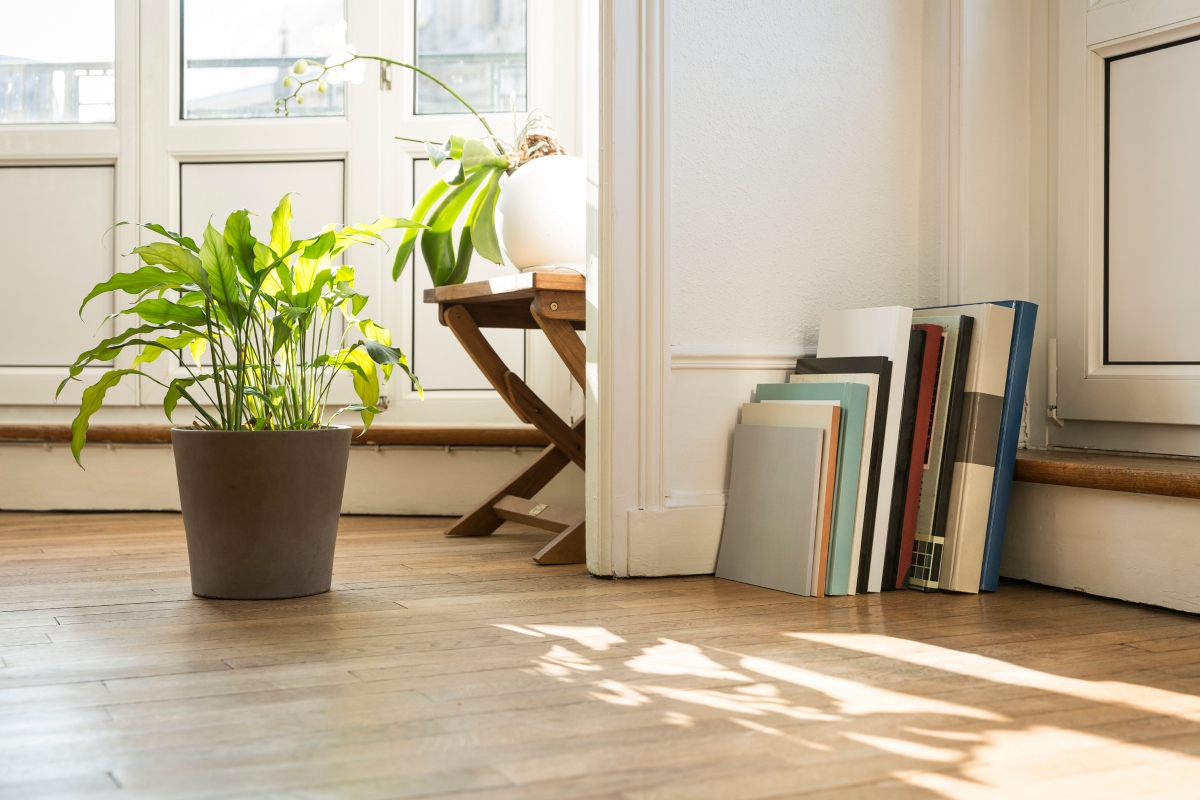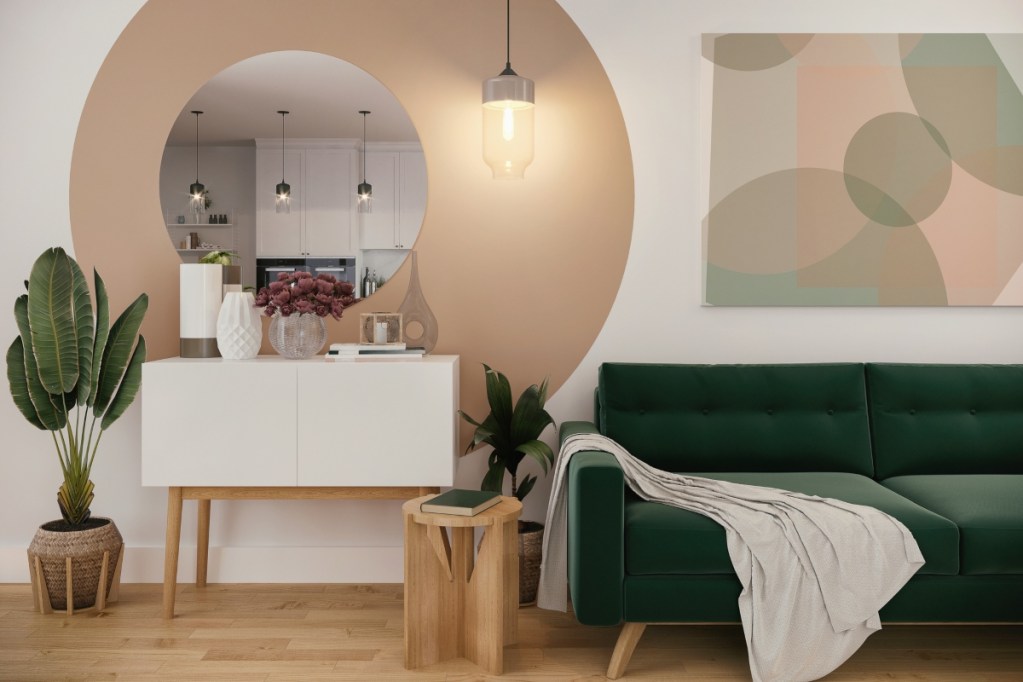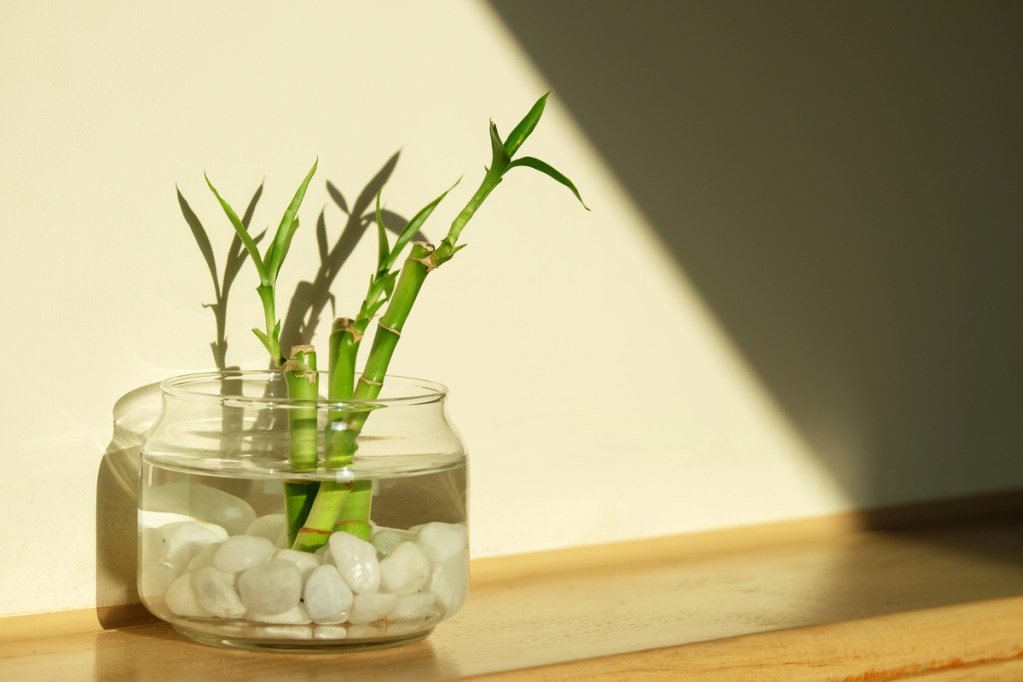Bamboo flooring offers your home a fresh and natural aesthetic. Many homeowners adore the light color, which feels airy and welcoming in any space. Others favor how sustainable bamboo flooring is over alternative flooring solutions. But what is bamboo flooring? How is it different from hardwood flooring?
We share the bamboo flooring pros and cons you need to know to decide if this is the best solution for your home.
What kinds of bamboo flooring are there?

Contrary to what you may think, bamboo is a grass, not a wood. Bamboo flooring is made by cutting the bamboo plant into strips and using machines to engineer refined planks. There are a few types of bamboo flooring that can impact its appearance.
- Natural bamboo: This type of bamboo doesn’t undergo any staining or carbonization. It is often light blonde, and some tonal imperfections may be seen in the planks, particularly in the different grains.
- Stained bamboo: Bamboo flooring can be stained any color. Darker tones can be popular to suit a specific design. Additionally, staining makes the grain appear more uniform.
- Carbonized bamboo: Some manufacturers will add carbon to the planks during the engineering process. This can result in darker tones but will also make the planks softer.
Types of engineered bamboo flooring

The process of connecting the bamboo grass strips and transforming them into planks can vary by manufacturer. All bamboo flooring is made from cut or shredded bamboo grass that’s pressed and glued together. Here are some standard techniques for engineering bamboo flooring.
- Horizontal: This process layers the bamboo strips together. Some notches and coloration are visible in the end result, providing a more natural look.
- Vertical: Bamboo strips are turned and laid side by side before gluing. This results in a more obvious grain that looks like thin lines running along the plank.
- Woven: Sometimes called “stranded,” woven bamboo flooring is made from shredding bamboo grasses before pressing them with resin. The result is flooring that looks like “tiger stripes” with more dramatic variation in color between the bamboo and resin. It is also a more durable engineered bamboo flooring option.
How much does bamboo flooring cost?

Bamboo flooring can cost $3 to $10 per square foot, depending on the brand and quality. Engineered and horizontal bamboo planks will be more affordable than vertical or woven planks. Additionally, you may have to spend extra on staining if you plan to refinish your flooring. Labor costs will also need to be taken into account.
Is bamboo flooring an eco-friendly option?

The truth is that bamboo can be one of the more eco-friendly and sustainable flooring choices for many homeowners. However, there are a few things you should be aware of if you opt for bamboo flooring due to its ecological footprint.
Bamboo is a native Chinese grass that can grow and replenish quickly, often making it a better sustainable choice than hardwoods, which take years to grow back. It is also a recyclable material, particularly if you choose natural bamboo floors, making it ideal for those looking to reduce waste if they choose to renovate later in life.
However, overseas practices are not well monitored. It’s difficult to guarantee that the bamboo harvested for the flooring isn’t in an ecosystem where endangered species require the plant to survive. Additionally, shipping the product overseas can vastly increase the carbon footprint. It’s also important to note that dyes, glues, and resins in the engineering process can impact the health and well-being of native species, local populations, and you and your family.
To obtain the most eco-friendly bamboo flooring, purchase from a high-quality seller and look for a Forestry Stewardship Council (FSC) Certified label.
Pros of bamboo flooring

- Bamboo flooring doesn’t need to be sealed, making it easy to maintain. Regular vacuuming and gentle mopping will keep your floors looking pristine.
- Bamboo flooring is pet-friendly and durable. It is resistant to scratches and stains.
- Like other hardwoods, bamboo flooring can be stained or refinished, depending on the thickness of the planks.
- Bamboo flooring looks modern and contemporary, great for light color palettes.
- It can be more sustainable than hardwood flooring, since bamboo can regenerate quickly.
Cons of bamboo flooring

- You’ll need a flat and level subfloor or underlayment to ensure your bamboo floors don’t warp.
- Bamboo floors don’t hold up well in high-moisture environments or homes with higher humidity. Standing water can damage and warp the floors.
- Inexpensive or low-quality bamboo flooring may be susceptible to scratches and stains.
- Not all bamboo is sourced by a reputable seller, so you’ll have to do some research before purchasing if you want an eco-friendly flooring solution.
- Bamboo flooring is limited in shades and tones. The natural color may not be the best choice in every home design.
Bamboo flooring is a beautiful, natural flooring solution that feels light, airy, and rejuvenating in modern and contemporary spaces. Depending on the manufacturer, it can be a sustainable and eco-friendly flooring option for many homeowners. Just be sure to avoid putting bamboo flooring in humid or moisture-rich areas to prevent warping so you can enjoy your floors for years to come.




